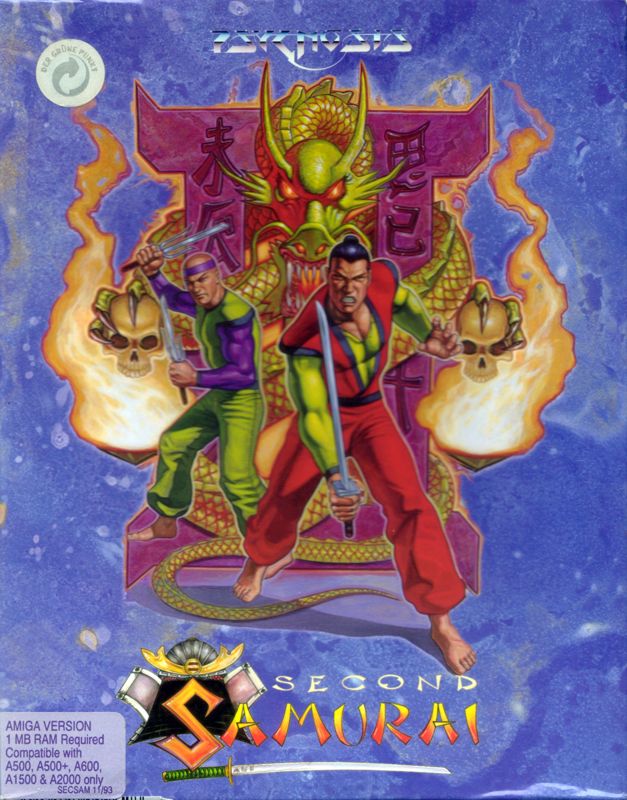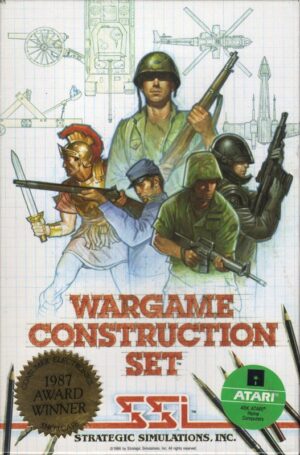Retro Replay Review
Gameplay
Second Samurai picks up the pace immediately, throwing players into ten distinct worlds, each made up of bite-sized sub-levels that culminate in intense boss encounters. The structure leans into an arcade mindset, encouraging repeat attempts to master enemy patterns and environmental traps. This division into sub-levels keeps the action varied and prevents the experience from ever feeling repetitive, since each mini-stage refines the hacking, slashing, and platforming loop in fresh ways.
(HEY YOU!! We hope you enjoy! We try not to run ads. So basically, this is a very expensive hobby running this site. Please consider joining us for updates, forums, and more. Network w/ us to make some cash or friends while retro gaming, and you can win some free retro games for posting. Okay, carry on 👍)
The combat system remains straightforward yet surprisingly deep. You begin unarmed, forced to rely on precise jumps and timing until you discover your first blade. From there, the acquisition of swords, daggers, and special weapons feels meaningful—each offers unique reach, speed, and damage profiles. Timing combos and managing stamina add a light layer of strategy, especially when facing groups of foes or navigating perilous platform sections.
Puzzle-solving elements are woven into many levels, requiring more than just brute force. Hidden switches, movable blocks, and ancient mechanisms challenge players to think before they leap. Secret passages abound, rewarding exploration with extra lives, weapon upgrades, or snippets of the end sequence narrative. These concealed areas incentivize replays, as finding every hidden alcove can unlock bonus subgames and improve your final outcome.
One of the more surprising inclusions is the occasional shoot ’em up subgame. These segments break up the swordplay with high-octane, side-scrolling action that tests your reflexes in a different way. The seamless transition between hack-and-slash and projectile-based gameplay keeps things fresh and showcases the developers’ ambition to blend genres. Overall, the gameplay loop is tight, varied, and perfectly tuned for both quick bursts of action and marathon sessions.
Graphics
Second Samurai presents a vibrant take on ancient Japan, with lush forests, towering temples, and fiery underworlds rendered in rich, 16-bit palettes. Character sprites are impressively detailed, capturing fluid motion and expressive poses whether you’re sprinting, slashing, or performing acrobatic jumps. The animations feel weighty, lending each sword swing and monster roar a satisfying sense of impact.
Backgrounds are layered with parallax scrolling effects that create real depth, drawing you further into this mythic era. Daytime scenes glow with soft sunlight streaming through bamboo groves, while nighttime levels employ moody blues and purples to evoke a sense of danger. Lava-filled caverns and demon-infested castles push the color choices into more menacing territory, providing clear visual cues that sharpen the tension as you progress.
Boss designs stand out as the visual highlights of each sub-level. From gigantic oni wielding flaming clubs to spectral naga twisting through the air, every major antagonist boasts unique animations and attack telegraphs. These creatures feel alive, making each battle a visual spectacle in its own right. Careful attention to detail in the bosses’ movements and color schemes helps you anticipate their next move, marrying form and function beautifully.
Even the shoot ’em up interludes shine with crisp, fast-moving sprites and explosive effects. Projectiles streak across the screen with vivid contrasts, ensuring that you can track bullets and avoid hazards under pressure. While the visuals won’t match modern HD standards, they strike an ideal balance between clarity and retro charm, making Second Samurai a genuine treat for fans of classic pixel art.
Story
The narrative in Second Samurai picks up precisely where First Samurai left off: the Demon King has warped back in time to ancient Japan, intent on unleashing chaos across the land. Our valiant hero, determined to prevent this cataclysm, pursues the villain through temporal gateways—setting the stage for a quest that spans both history and myth. Though the storyline isn’t overloaded with exposition, it provides just enough context to fuel your journey.
Each world subtly expands on the lore: rural villages whisper of demon attacks, temple priests warn of corrupted spirits, and surviving samurai speak in hushed tones of the Demon King’s unstoppable power. These narrative breadcrumbs, delivered through brief interludes and environmental storytelling, foster a sense of immersion without pulling you away from the action. You feel constantly driven forward, eager to learn how your hero’s destiny will unfold.
Hidden sections scattered across the levels reveal extra fragments of the end sequence, rewarding thorough exploration with narrative payoffs. Discovering these areas ties together backstory elements—how the time travel came to be, the Demon King’s motives, and the samurai’s personal stakes in this battle. These optional story beats don’t slow the core experience but add layers for players invested in the tale.
Though not a narrative heavyweight, Second Samurai strikes a satisfying balance between story and gameplay. The time-travel premise, combined with Japan’s rich folklore, lends the adventure an epic scope. By the time you confront the final demon lord, you’ll have traversed serene forests, haunted ruins, and fiery pits—all the while piecing together the Demon King’s sinister plan and the samurai’s ultimate fate.
Overall Experience
Second Samurai is a shining example of how to evolve a beloved action-platformer without losing its roots. Fans of the original will appreciate the refined combat, the expanded level design, and the arcade-inspired sub-level structure. Newcomers will find plenty of depth in the combat system, puzzles, and hidden content to keep them hooked for hours on end.
The game’s pacing is stellar: no two levels feel identical, thanks to alternating environments, shifting enemy types, and the occasional genre-blending shoot ’em up. This variety ensures that boredom never sets in, while the increasing difficulty curve maintains a challenging yet fair progression. Replaying levels to discover all secrets or improve your completion time adds substantial replay value.
While the graphics and sound design may carry that unmistakable retro flavor, they do so with polish and flair. Each pixel feels purposeful, and the musical score—though limited by hardware—captures the spirit of ancient Japan with haunting melodies and driving rhythms. Together, the audiovisual presentation complements the gameplay perfectly, creating a cohesive and immersive experience.
For anyone seeking a fast-paced, action-packed journey through a mythic version of feudal Japan, Second Samurai delivers in spades. It blends nostalgia with innovation, offering a tough but rewarding adventure rife with secrets, spectacular bosses, and unforgettable set pieces. Whether you’re a veteran samurai or a newcomer to the series, this sequel stands strong as a must-play in the pantheon of classic action-platformers.
 Retro Replay Retro Replay gaming reviews, news, emulation, geek stuff and more!
Retro Replay Retro Replay gaming reviews, news, emulation, geek stuff and more!




Reviews
There are no reviews yet.